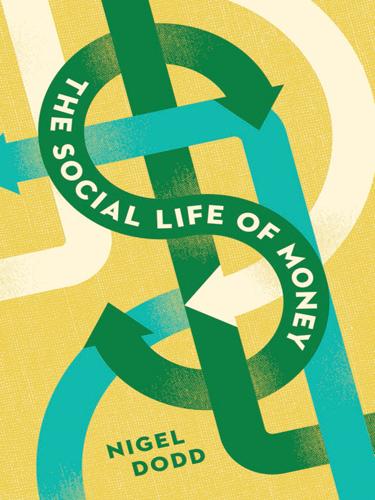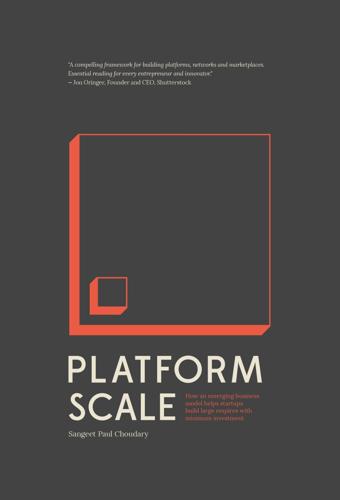Wave and Pay
description: a form of contactless payment using RFID or NFC technology
4 results

The Social Life of Money
by
Nigel Dodd
Published 14 May 2014
Many of the new payment systems that are available involve partnerships with established financial services companies: wave and pay operates through Visa, for example; Google Wallet works in partnership with Visa, MasterCard, American Express, and Discover; iZettle works with American Express and MasterCard. It is therefore worth pausing to ask why there has been such an explosion of payment services in recent years, before discussing what it might mean for the future of money. Google Wallet and Wave and Pay are forms of “mobile money” that have been developing alongside the growth of alternative monies. Mobile monies appeal to users because they remove from the act of payment the inconveniences and impositions associated with traditional banking.
…
The idea that you can “buy stuff just by asking for it” suggests a world in which we could behave as if money did not exist. If one could get credit in one’s bones, a whole host of practical problems—losing your card, having it stolen, verifying your ID—would evaporate. It is striking how close Stephenson gets to the spirit of what money has become: forms of mobile money such as contactless payment or Wave and Pay appear to render money as inconspicuous as it can possibly be—short of having your credit limit injected into your pelvis. In 2004, the Baja Beach Club in Barcelona launched a new payment system for its VIP members: a VeriChip implant lodged inside a 1-mm-diameter glass capsule injected beneath the skin.
…
See also capitalism; financial system Wallace, Henry, 149 war, 31n23, 121n, 126, 133, 266, 338, 360; in Bataille, 171, 174, 176; and capitalism, 60; in Cicero, 225; and empire, 238, 239; and gold, 225; its impact on money, 95–96, 97, 100, 225–26; and monopoly capitalism, 60; and Schmitt, 261. See also First World War; Second World War; Vietnam War; violence war against terror, 43 Warburton, Peter, 199 Warren, Josiah, 342 Warwick, University of, 73n30 waste, 12–13, 151; and the gift, 186; and money, 175, 184, 204; versus utility, 164 Wave and Pay, 377 Weber, Florence, 292 Weber, Max, 109, 247, 276n, 292, 302, 317; on capitalism and religion, 143, 155, 175; on charisma, 247; on Knapp, 103; on money and the modern state, 217; on prices, 109n25; The Protestant Ethic and the Spirit of Capitalism, 156, 175; on taxation, 217 Weimar inflation, 131n57, 142, 224, 387 welfare.

Platform Scale: How an Emerging Business Model Helps Startups Build Large Empires With Minimum Investment
by
Sangeet Paul Choudary
Published 14 Sep 2015
BACKWARD COMPATIBILITY AS A ROAD TO GRADUAL BEHAVIOR DESIGN Any form of payment has to combat a behavioral problem. Hence, building in some form of ‘backward compatibility’ helps spur adoption because users have the choice to continue with the existing method or transition to a new one. Visa and MasterCard have extensive experience regarding disrupting the payments space. When Wave and Pay were first introduced, the new cards that were issued supported both swipe (existing) and wave (new) modes of payment. Consumers could continue using swipe until merchants set up enough wave terminals. Additionally, a string of incentives to early adopters of wave helped increase the adoption of wave.

Future Crimes: Everything Is Connected, Everyone Is Vulnerable and What We Can Do About It
by
Marc Goodman
Published 24 Feb 2015
MasterCard and Visa have implemented numerous NFC payment programs that allow users to launch an app on their phones and wave or tap the device on a contactless sensor to quickly charge goods and services. From Starbucks, to Best Buy, to parking meters in San Francisco and cabs in New York City, “wave and pay” is increasingly the choice of users for quick checkout and payment. Though Google was an early adopter of NFC payment systems for its Android phones, in September 2014 Apple joined the bandwagon and added swipe-and-pay technology to its latest batch of iPhones. Within the Android ecosystem, Google’s Wallet payment system allows users to store their debit and credit card information with Google and launch the Google Wallet app to check out in an increasing number of stores via any PayPass-enabled store checkout terminal.
…
They are capable of performing real-time, constant data exchange and can be read by scanners, some as far as up to one hundred meters away. Even if you are unfamiliar with RFID technology, chances are you have already encountered it in your life, whether it’s the security ID card you use to swipe your way into your office, your “wave and pay” credit card, the key to your hotel room, your subway pass, or the little box you use to pay for highway tolls, such as E-ZPass. Though the convenience of RFID, considered by many the gateway to the Internet of Things, sounds great, there’s one problem: it’s eminently hackable. There have been dozens of exploits against RFID technology, whose electronics can be readily hacked, spoofed, and jammed, and there is an active “RFID underground” continually working on improving its offensive techniques.

The Long History of the Future: Why Tomorrow's Technology Still Isn't Here
by
Nicole Kobie
Published 3 Jul 2024
Core to the project was an online consultation platform, set up by Francesca Bria, then chief technology and digital innovation officer for the city, that let citizens share their views on government plans. In most cities, consultations are obscure, complex and hard to find. Barcelona made it easier to get feedback, not harder. There’s no question that tech can be used to improve city life. The card-based wave-and-pay ticketing system on London’s public transport network is now more than 20 years old, but whenever I travel to another city I hate the friction of having to figure out how to buy a local bus ticket. This is a cheap and easy solution that makes it easier to pay for travel, though ensuring cash can still be used is crucial in some cities.